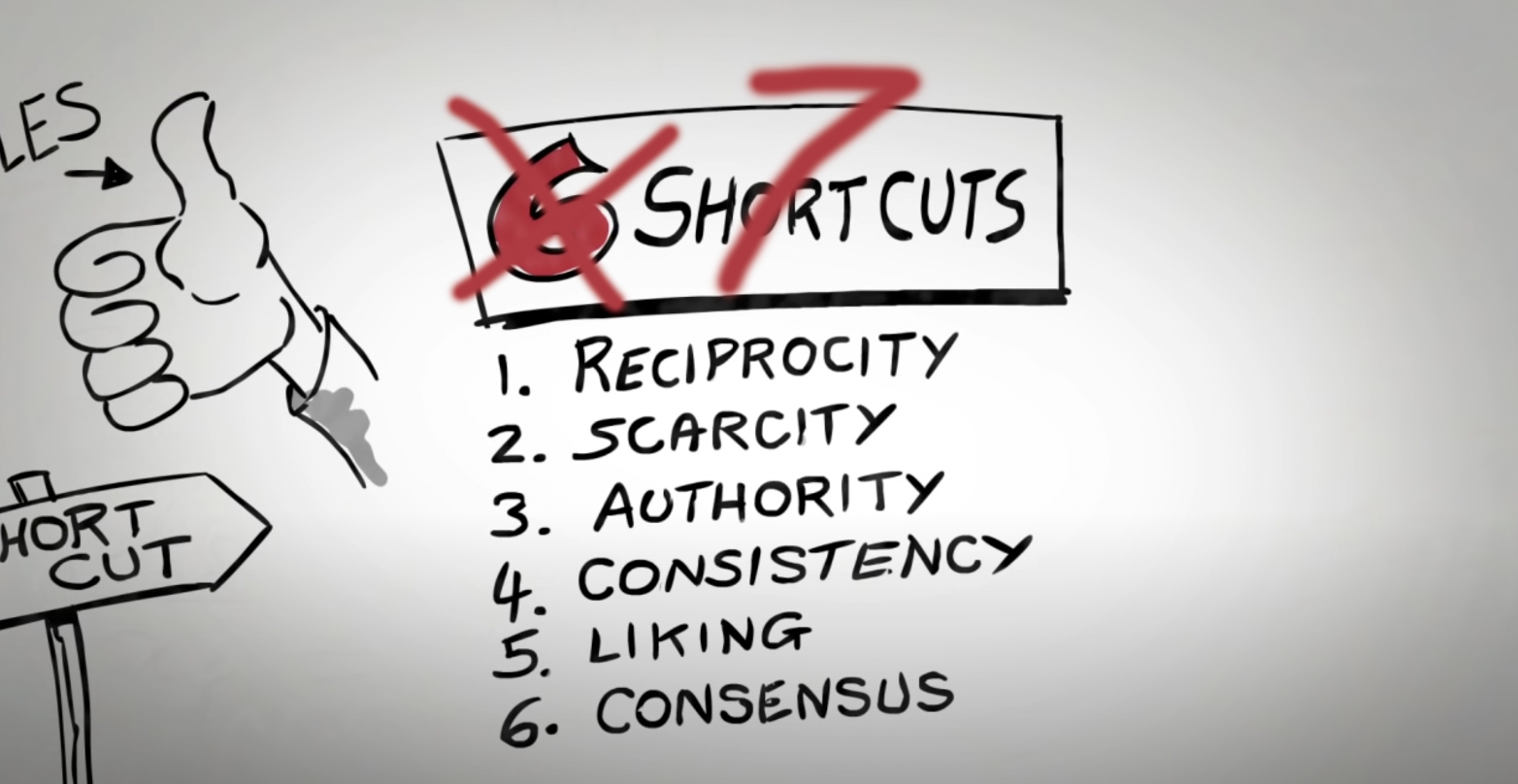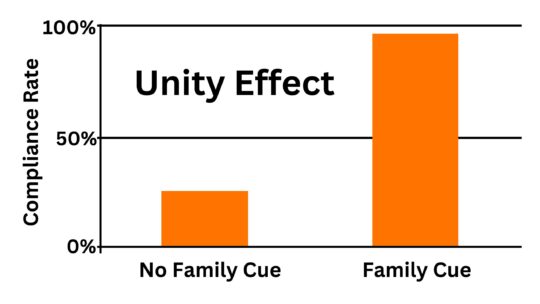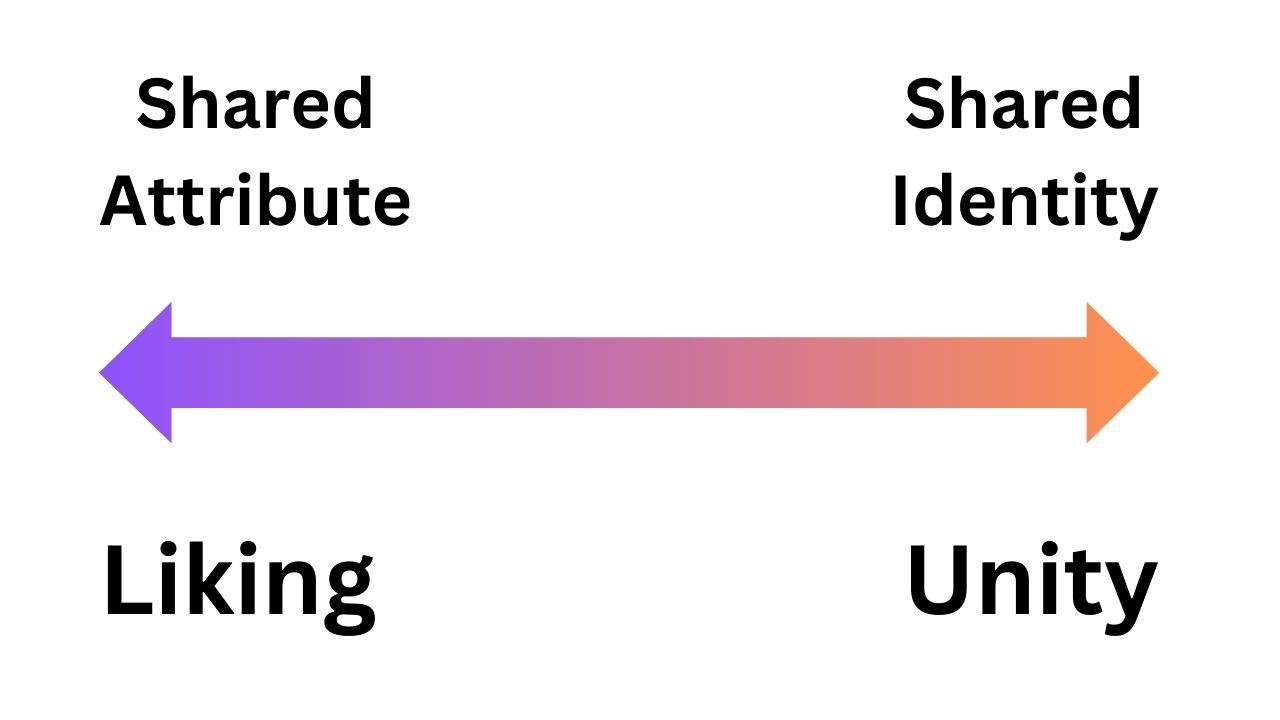What is Unity, Cialdini’s 7th Principle?

Nearly everyone in behavioral marketing and influence marketing was surprised when Dr. Robert Cialdini, the “godfather” of persuasion science and the creator of the celebrated Six Principles of Influence, introduced a seventh principle, Unity.
In fact, in 2014 I asked Cialdini if, thirty years after completing his seminal book, Influence, he’d add on another one or two. He declined, saying that while there were many influence techniques, the important ones mostly fit into his original six. (Check out our 2014 conversation for some great persuasion insights.)
 Two years later, things changed. Cialdini has launched a new, major book, Pre-Suasion: A Revolutionary Way to Influence and Persuade. In it, he acknowledges that one more influence technique rises to the level of being a major principle. He writes,
Two years later, things changed. Cialdini has launched a new, major book, Pre-Suasion: A Revolutionary Way to Influence and Persuade. In it, he acknowledges that one more influence technique rises to the level of being a major principle. He writes,
…now I believe that there is a seventh universal principle that I had missed – not because some new cultural phenomenon or technological shift brought it to my attention but because it was hiding beneath the surface of my data all along.
[That sound you hear is the chorus of groans from all the marketing gurus who are going to had to re-do their PowerPoint slides, evergreen web content, etc. Cialdini himself may have to redo his wildly popular Science of Persuasion animated video.]
What is Unity, Robert Cialdini's 7th Principle? pic.twitter.com/C47mJEd2Q1 Share on XUnity: It’s All About Us
With Unity, Cialdini is referring to a shared identity that both the influencer and influencee are part of. The more we perceive people are part of “us,” the more likely we are to be influenced by them. This fits with the entire theme of Pre-Suasion, which is to create a favorable state of mind just before the actual persuasion effort occurs. Reminding someone of a shared identity makes you more persuasive.
What is Unity?
Unity is the bond formed by a shared identity. This identity can come from being part of a family or a close-knit team, but also can be based on race, ethnicity, nationality, religion, political affiliation, and other factors. The key distinction is that members of these groups feel “at one” with other members.
In this video, Cialdini explains Unity in his own words:
Family Ties
The most powerful manifestation of unity is being in the same family. People go to great lengths, even risking their lives, to help genetically close relatives. Cialdini shows how you can use family-driven unity, even when you are trying to influence people who aren’t your own relatives.
In one of his college classes, Cialdini wanted to compare attitudes of students and their parents by having both fill out questionnaires. Student compliance was always very high – one ignores homework assignments at one’s own peril! But, parents typically responded at a far lower rate, often below 20%.
One small tweak to the assignment increased the parent response rate to 97%. What was the simple intervention? Cialdini said he would give the students an extra point on one test if their parents completed the survey.
One point on one test in a semester-long course is an inconsequential benefit. It would be unlikely to have any impact at all on the student’s final grade. But, by invoking the concept of helping a family member, Cialdini increased the response rate fivefold, from poor to nearly perfect.

Unfortunately, most of our persuasion efforts don’t involve a group of students ready and willing to follow our direction. But, imagine a situation where you were offering a free item to encourage placing an order. What if instead of offering the free item to the buyer, you offered to give a gift to their parent, child, or spouse? That might actually be more effective than offering the free item to the buyer, even though the buyer doesn’t benefit directly.
#Persuasion news: Cialdini adds 'Unity' as 7th Principle of Influence pic.twitter.com/C47mJEd2Q1 Share on XUsing Family Language
Cialdini describes an even easier way to leverage familial unity. By using family-related language, you can invoke the effect in a powerful way. He cites the example of Warren Buffett, who in addition to being a master of investing (perhaps THE master) is also a master of communication.
A big concern of investors has always been what happens to Buffett’s firm, Berkshire Hathaway, when he he’s no longer in charge. In a particularly important letter to shareholders regarding succession plans, Buffett wrote, “I will tell you what I would say to my family today if they asked me about Berkshire’s future.”
With that language, Cialdini says, Buffett was highly convincing because he said he was advising readers in the same way he would advise a family member. Coupled with Buffett’s perceived trustworthiness, the content of the letter was highly convincing. The investment community reacted in a very positive way, praising it as Buffett’s best shareholder letter ever. Simply laying out the succession plan in factual language would have been less effective.

You can do the same thing. For example, you might say, “Here’s what I’d advise my children to do…” Naturally, you could use words like “sister,” “parents,” etc. depending on the age and situation of your influence targets.
Other Unity-Based Tactics
Cialdini provides examples of other ways to employ unity. One of the most remarkable comes from wartime Japan. In 1941, the Japanese didn’t follow the lead of their Nazi allies in brutalizing Jews. This was due, at least in part, to a Jewish scholar making a single persuasive statement to Japanese leaders debating the issue: “We are Asian. Like you.” This shifted the mindset of the leaders, and they rejected the pressure to adopt Nazi tactics toward Jews.
“Co-creation” also builds unity. People who are involved in the creation of something feel better about it. Their self, to some degree, is merging with their creation. (Remember the IKEA effect?) Sometimes, even simple language tweaks make a difference.

Cialdini describes the market research for a new fast-casual restaurant concept, Splash!. Consumers were shown a description of the concept, and asked for feedback. But, the exact language varied – a survey taker might be asked for “advice,” “opinions,” or “expectations.”
The final question of the survey was how likely the consumer would be to visit a Splash! location. Those asked for “advice” were significantly more likely to answer positively. Asking for advice put the survey-takers in a “togetherness” frame of mind. They were helping create the new concept, not just commenting on it.
Shared ethnicity, location, and other factors can be emphasized to build unity. With a little creativity, you can find a factor that will unite you with your customer.
Unity vs. Liking
A common question I’m asked is how Unity differs from Cialdini’s long-established Liking principle.
These principles are similar. Both involve having something in common with another person, and that commonality makes you (or the other person) more persuasive. Indeed, before Cialdini introduced Unity, those familial or group identity bonds would have fallen under Liking.

The difference is a matter of degree. Liking is based on a shared attribute, Unity on a shared identity. Arguably, this is a continuum. Familial identity is usually more powerful than, say, political affiliation. In turn, one’s political identity might be more powerful than, say, having the same favorite sports team.
Even then, individual differences can make the difference. For a football fan who paints his house with the team colors and goes to games in a themed costume, being a fan of that team is part of his identity. For another fan of the same team that watches games occasionally on television, that fanship would be merely an attribute.
This distinction isn’t necessarily a problem. Persuasive appeals based on a shared characteristic can work whether they invoke Liking, Unity, or something in between. The closer to Unity, though, the more potent they will be. Humans favor members of their tribe.
Pre-Suasion

Pre-Suasion has a lot more to offer marketers than a new Principle No. 7. In fact, unity makes its appearance near the end of the book. Cialdini focuses on research showing the importance of timing in the persuasion process, a factor largely ignored in earlier writing.
Timing is everything, says Robert Cialdini in book Pre-Suasion pic.twitter.com/C47mJEd2Q1 Share on XThe book runs over 400 pages, with almost 100 pages of references and 70 pages of “notes.” The latter are what Cialdini describes as “color commentary” on the text. The notes include personal observations, fun facts, and many more references for those who want to dig deeper.
Pre-Suasion is an absolute must-read for anyone in marketing and sales. Anyone who deals with people will gain new insights into what makes others tick and how to influence them.
For more about unity and the other important new concepts in Pre-Suasion, check out my Brainfluence Podcast featuring Robert Cialdini. You’ll spend a persuasion-packed 40 minutes with the scientist who created the field. And, if you don’t have time to listen, just grab the nicely formatted PDF transcript to read later.
Want to get the full Pre-Suasion story? Pick the format of your choice from our friends at Amazon:
- Amazon: Pre-Suasion: A Revolutionary Way to Influence and Persuade
- Kindle: Pre-Suasion: A Revolutionary Way to Influence and Persuade
- Audible: Pre-Suasion: A Revolutionary Way to Influence and Persuade
